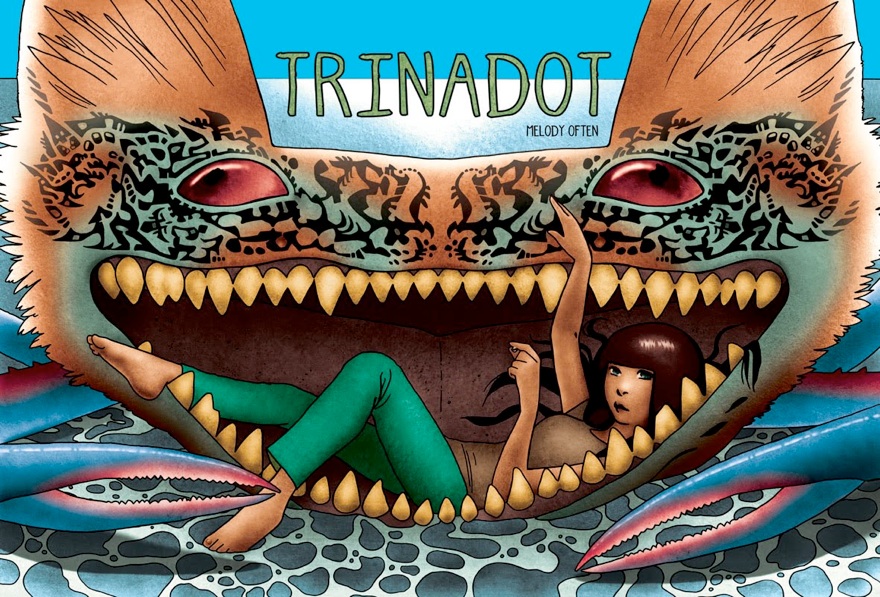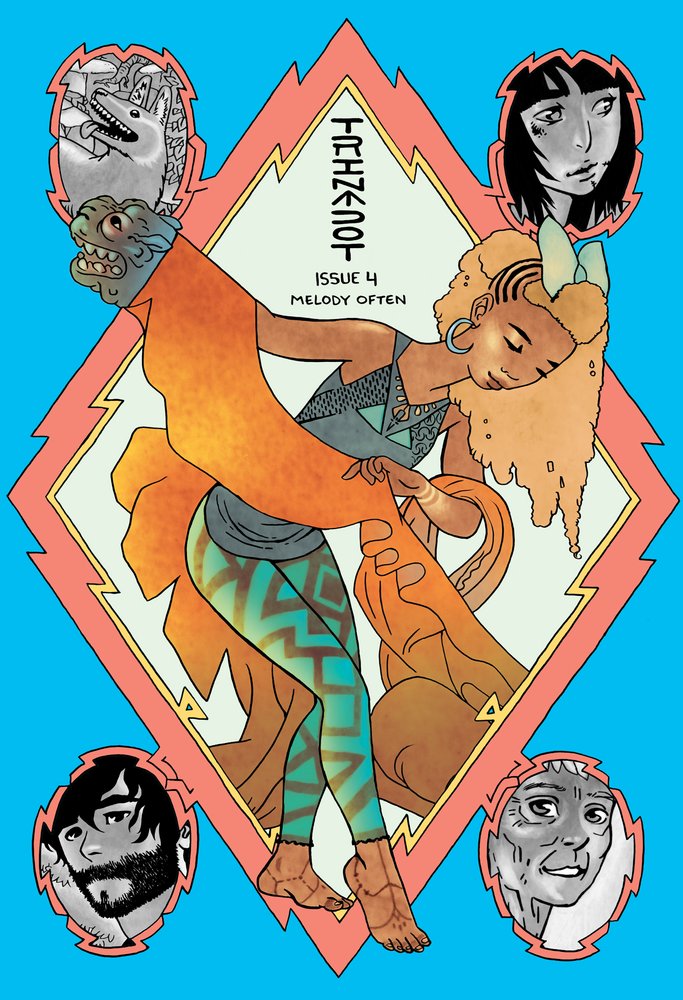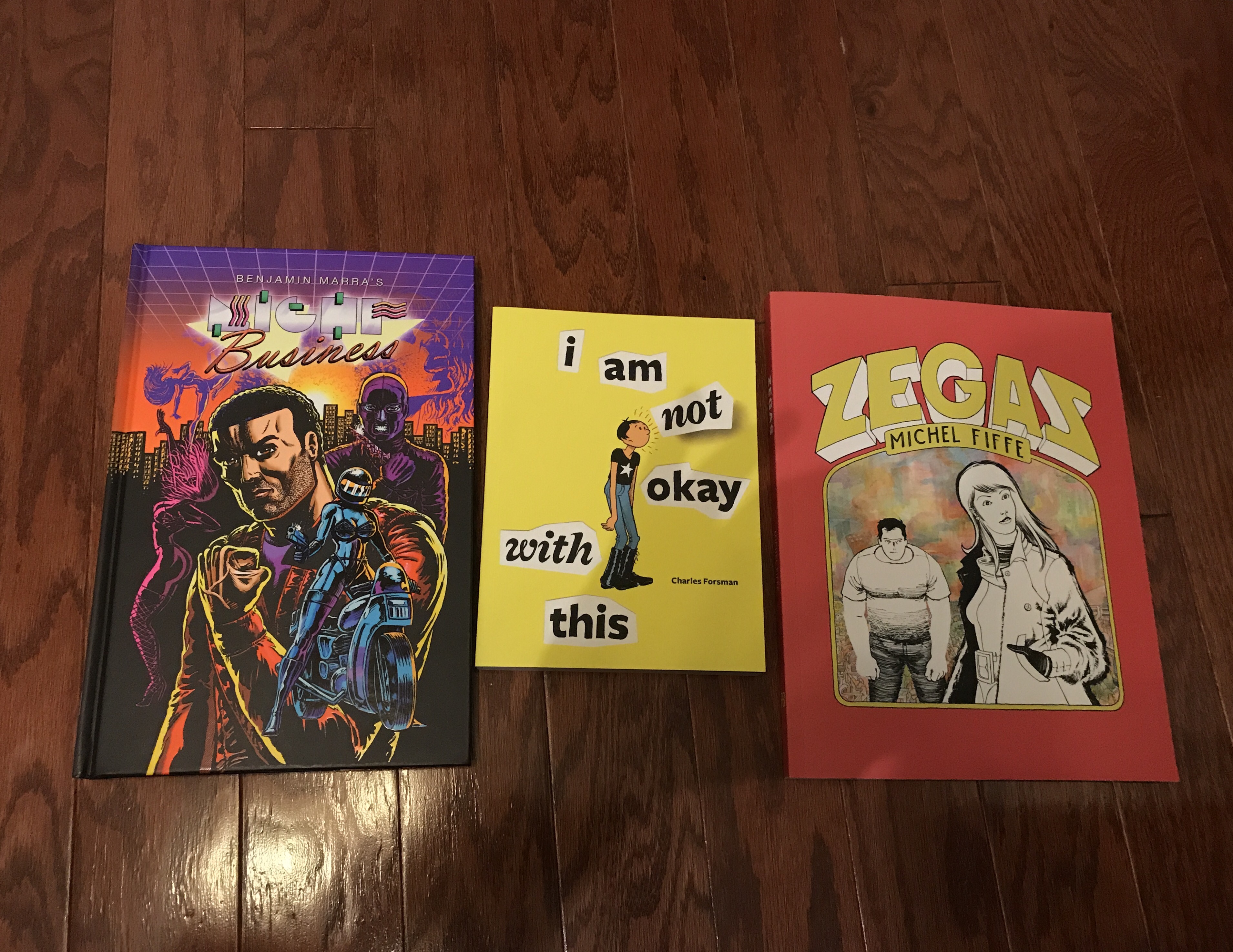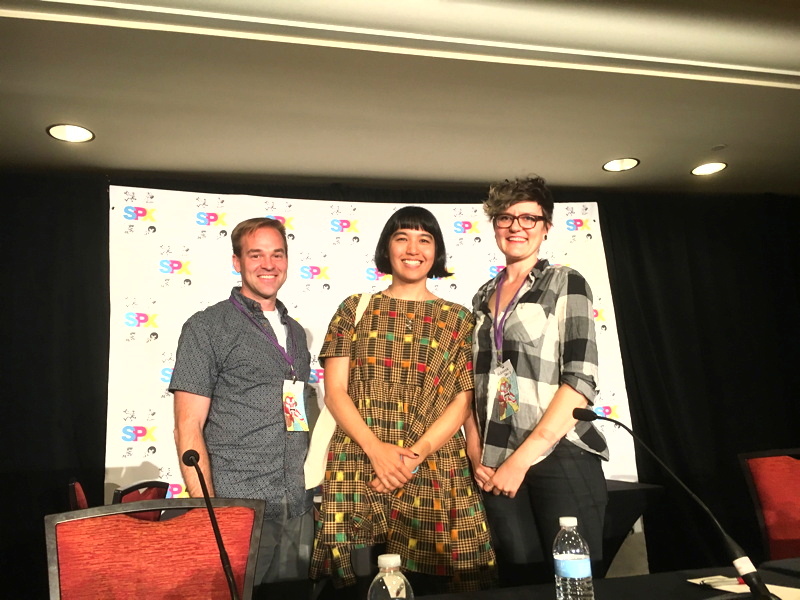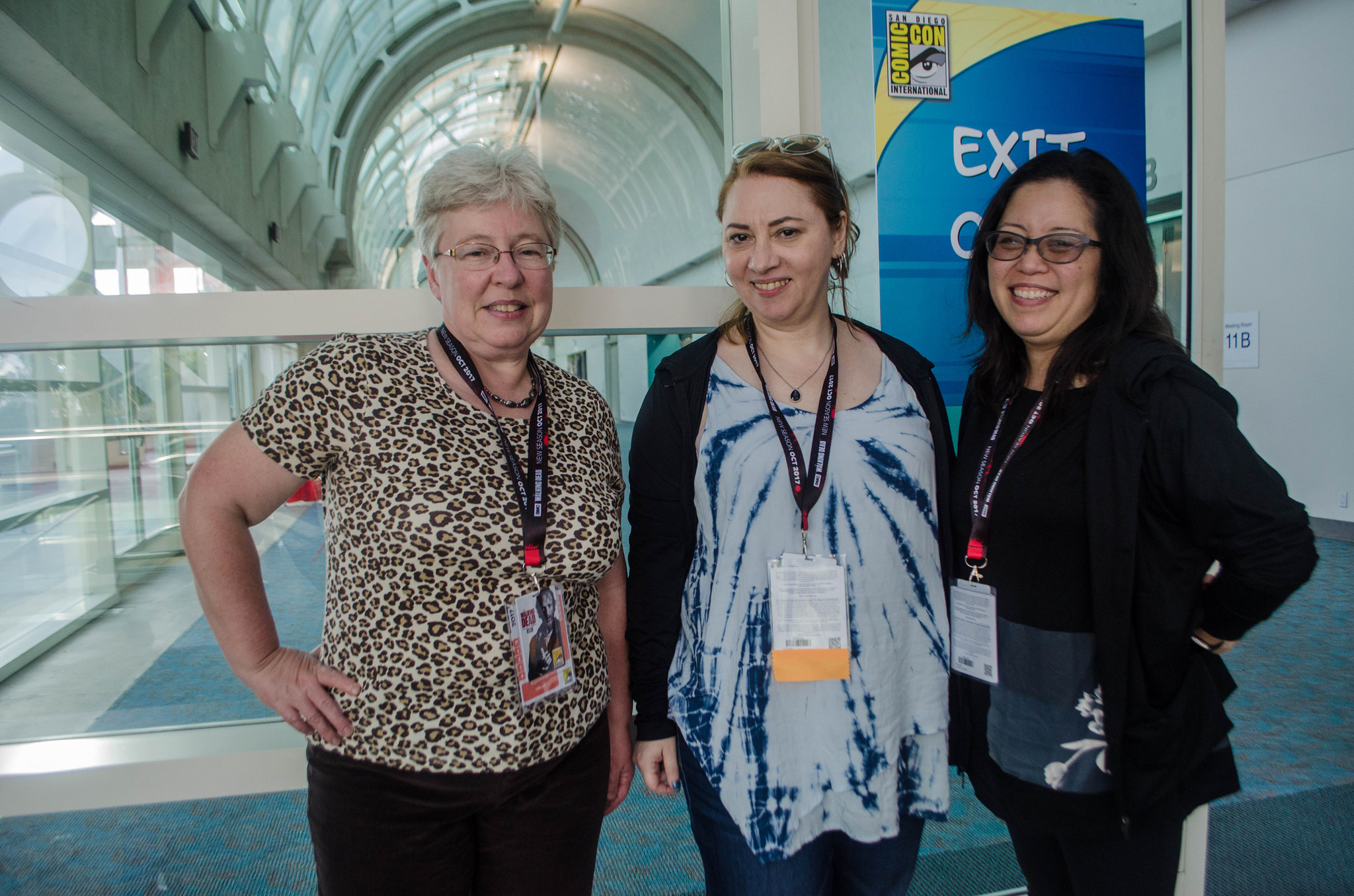Small Press Expo (or SPX) nonprofit created in 1994 to promote artists and publishers who produce independent comics. It’s mission is to “To provide a forum to showcase new and emerging talent in the fields of comics, graphic novels and political cartooning”. In the spirit of this mission, the Comics Beat has conducted a series of interview with some of the phenomenal cartoonists in attendance at this year’s Small Press Expo. We hope that these interviews will improve our understanding of these creators voices, techniques, interests and influences.
In this seventh SPX 2017 interview, we talked with Melody Often. Melody is a comic artist, illustrator, painter and colourist based in Brooklyn. She won a Xeric award in 2006 for her short graphic novel In the Hands of Boys and has since been working on a long term project called Trinadot. Trinadot is a fantasy story about a remote island who experimented with science and technology and was eventually lost in time. The protagonist Bea finds the island and hopes to learn more about her own story as she was raised to believe she was the reincarnation of a divine being with ties to the island. Melody has begun re-releasing Trinadot in colour back in 2015. I’ve reached out to her to talk about this recolouring project, the origin of her webcomic, her contribution to Amazing Forest and the Xeric grant.
—
Philippe Leblanc: For those readers who may not be familiar with you and your work, can you tell us a little bit about yourself?
Melody Often: I grew up on mutants, manga, and Miyazaki, drawing scenes from my imagination and dreaming of contributing my story to the great Earth treasury. My first lengthy comic book was based on a story written by my mother about the conflict in Sarajevo in the 90s. The reason I decided to do that was to show that I saw comics as a serious medium. I was blown away when it received the Xeric to be printed on a large scale. I was told American comics were not often done completely in pencil and that I was a rare female in a male dominated industry. I set to work creating the ongoing adventure comic, Trinadot. I had always had a story bubbling under the surface, running parallel to my own life, and to finally begin drawing it was as though the story layer was an organism that flowered to escape the personal strata and achieve the collective consciousness.
PL: You began your webcomic Trinadot in 2008. You’ve since posted it on Stela, the webcomic platform. It’s a fairly long project. How did this begin?
MO: I began drawing Trinadot in 2008 but didn’t begin posting it online in color until 2015. In the years leading up to the web launch I was drawing each issue and printing small runs for release at SPX. I was able to do three issues in three years but started losing steam by issue four. SPX is one of the most dense collections of talent in the American comic book industry and I would have to change, grow, and refresh my techniques of production and distribution if I was going to survive and keep going. As I made the transition to working freelance exclusively I had an opportunity to pitch myself for a Stela project and when they reviewed my links they discovered Trinadot and offered me a deal. It all depends on if Trinadot can get a following on their mobile platform.
PL: You are rereleasing Trinadot in colour. Why was it important to rerelease this tale in colour?
MO: As my first comic was a grayscale rhapsody and many of the manga I loved were too it seemed possible that I might stay black and white like those first few print issues. As I started shifting my process in issue four I had to ask myself what I ultimately wanted for Trinadot. Growing up, my birthday always fell on the theatrical release date of many classic Disney films and I would take my friends to see them in those huge opening-night crowds. So, if my goal for Trinadot is to one day be an animated feature film or series, I needed to see the comic as concept art as well. Now I work as a colorist for publishers like Stela, IDW, and Image and I’m adding more color and atmospheric effects to my arsenal. Issue five of Trinadot represents a new era of production which will include a lot of experience garnered from freelance work.
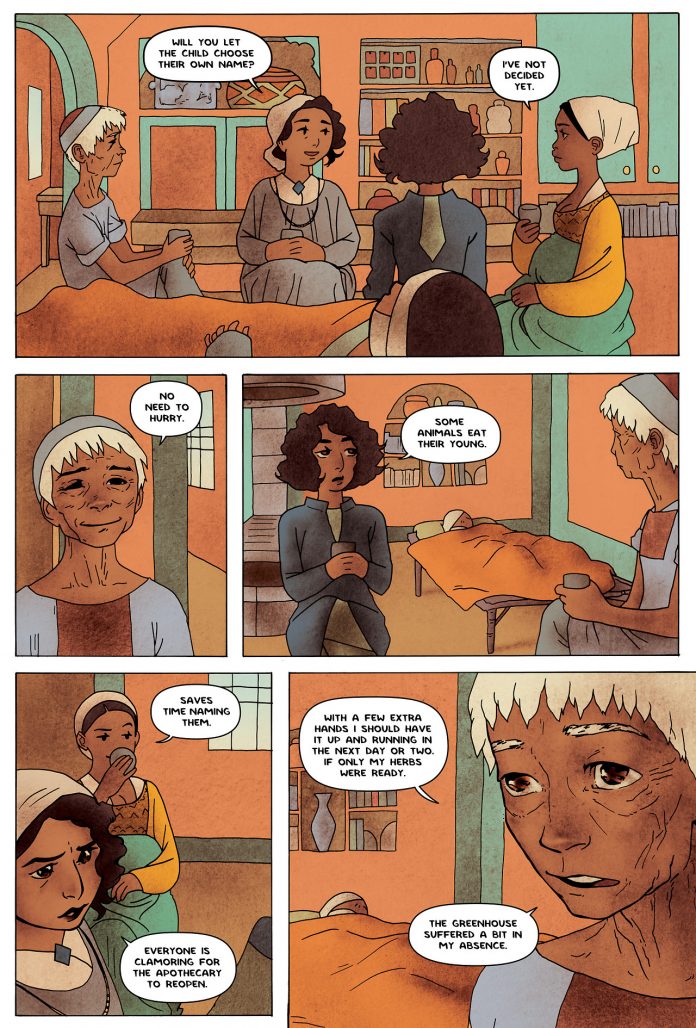
PL: You’ve worked on Amazing Forest for IDW. How different was this from your self-publishing experience?
MO : Being published by IDW is fantastic! The creators of Amazing Forest, Ulises Farinas and Erick Freitas, the former who I am now in a relationship with, asked me what sort of story I was interested in drawing. They gave me a choice of 4 different tales and when I told them I liked reluctant heroes, cyborgs, and drawing women they came up with Ronnie the Robot. At that time it was slated to come out on Comixology via Monkeybrain Comics. After some time IDW picked the title up and the collected trade bears the cover Ulises drew of the character he created for me. In many ways Amazing Forest was a game changer. The obscurity of self-publishing can be a blessing, when you create for yourself with only your own heart defining the limits. Obscurity is a problem when trying to figure out how to get your story before the audience that wants, needs, and appreciates it.
PL: You’ve won a Xeric in 2006 for your graphic novel In the Hands of Boys. I’m wondering how that influenced your path in the cartooning field. What has this award enabled you to do that you may not have been able to otherwise?
MO: Diamond Distribution had an automatic acceptance policy for any Xeric winner so it was amazing when the order for hundreds of copies of In the Hands of Boys came in to be sent to comic book stores. The grant name alone has won me invitations to speak at schools and libraries, appearances at conventions, and participation in anthologies. When I talk to up-and-coming creators at conventions I mention the Xeric as an important concept. In an industry that keeps repeating the same stories over and over again it’s so important that we create incentives for unique stories to be told. If a paradigm is a disease a good story can be an inoculation. We need our oddballs to be heard because they might have the answer to something we’ve been lamenting for too long. The Xeric has ended but I hope other financial incentives for comics appear because nothing tells your skeptical supporters you might be able to make a go of a long-shot career like a $10,000 grant.
PL: What do you want readers to take with them once they’ve finished reading your comics?
MO: That life is beautiful and sad and silly and each of us is literally an astronaut on a wild adventure in outer space.
—
You can follow Melody Often’s work on her website, her patreon page or follow her on Twitter. You can also buy her work over at her online store. Her comics Trinadot can be found on her tumblr page or more easily on Stela.
She will be at SPX this weekend at table M9 with her latest issues of Trinadot. She’s looking forward to meeting you!

SaveSave
SaveSave
SaveSave
SaveSave
SaveSave
SaveSaveSaveSave



